If you’re looking for information on how to hang wallpaper, this blog post is not it. There is a lot of information you can watch or read online if you want to learn to hang wallpaper yourself. However, in my opinion, wallpaper hanging is an art and I leave it to the professionals. Always.
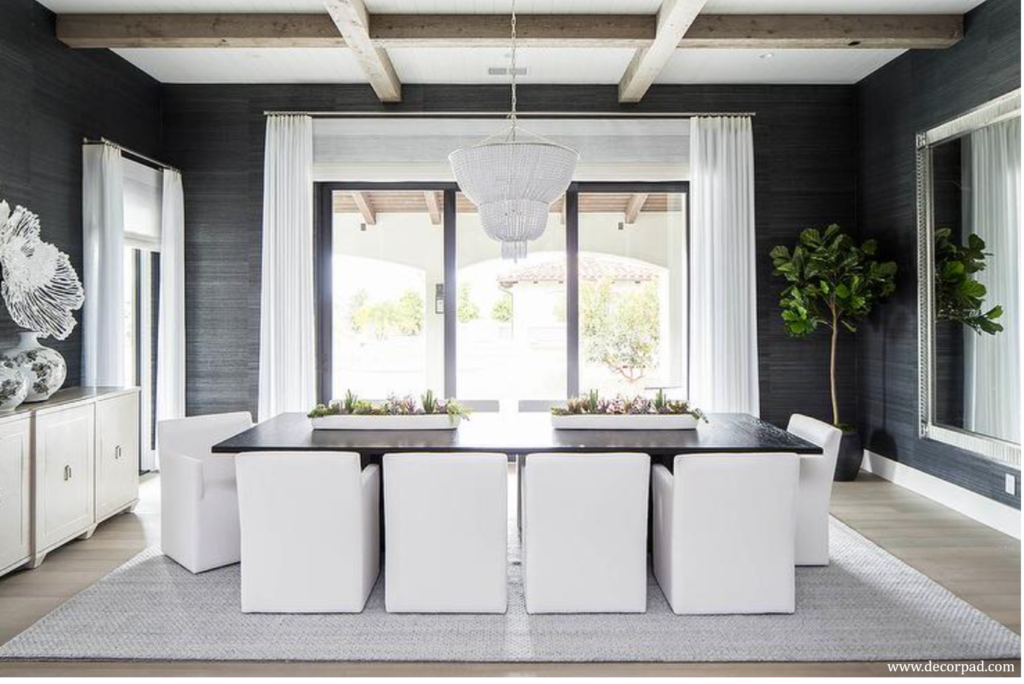
So what is this post about then? First, it’s everything you should know before ordering wallpaper so it’s particularly great information for new design professionals. Second, I want to share information on one of the “best kept secrets” in the world of wallpaper – wall liner. I’ll talk about what it is, how to use it, and how it can be used to solve your biggest wallpapering challenges.
First, let’s dive into frequently asked questions about wallpaper. Like many products, wallpaper has its own vocabulary and if you’ve ever shopped for or read about wallpaper, you’ll see terms like “bolt”, “booking”, and “batch number” – what do they all mean? Not to worry, I’m here to break it all down for you!
I’m completely confused by the pricing! If I only want to order 1 roll, why must I order a minimum of 2? Is the pricing for 1 roll or 2 rolls? And why do I have to order 6 rolls if I only want 5?
This is actually a historical issue and why they haven’t changed this universally yet to not be so confusing for first time buyers, is beyond me (although some retailers have made the necessary change to make this clearer to consumers). Here is what is going on.
The simple answer is that most wallpaper is priced as a single roll, but almost always only sold as a double roll. So if the single roll cost is $50, you must pay a minimum of $100 for two rolls which are packaged as one double roll. (And to make it more confusing, sometimes wallpaper is sold in triple rolls, usually for rooms with high ceilings).
OK, but why??!
I’ve actually heard a number of different reasons for the history behind this madness, from making it easier for DIYers who frequently underestimate how much wallpaper they actually need (so give them double what they think they need), to the fact that a European wallpaper roll contained more paper than an American roll, so in order to compete, we dropped our price in half to show this new “single roll price” even though you still had to buy 2 rolls! I can’t say definitively what the true reason is, but if you think you know, please leave it in the comments! What I can say is that I have heard time and time again from wallpaper hangers that non-professionals do frequently underestimate how much paper they need and unfortunately, it’s not as simple as just ordering more, as you absolutely want the paper to be from the same batch or dye lot number (I’ll get more into this later).
Anyway, the important thing to know is that the price you see is nearly always the price for a single roll, but retailers nearly always sell them as a double roll, so you need to double the price to know the true cost of what you’ll be paying. That said, I have seen some retailers who price and sell only in double rolls – hooray! Also, there are a few retailers who will sell “half rolls”, meaning a true single roll.
The bottom line is that you need to pay close attention to the details of the wallpaper you want to buy. It should clearly state something like “Price shown per single roll. Sold only as a double roll”, or it might clearly state “$50 per double roll”. Please note that when you order a double roll, you will receive only 1 roll, not 2. A double roll just means that it is twice as long as a single roll. So don’t be alarmed when you only see one roll in your delivery!
Whatever the reason, the truth is that a longer roll will provide you more usable full lengths than a shorter roll, so double rolls are actually more cost effective for the consumer.
So how big is a roll of wallpaper anyway?
In the U.S., a true single roll is usually 20.5 inches wide and 16.5 feet long or 27 inches wide and 13.5 feet long. But because they are sold as a double roll, they are either usually 20.5 inches wide and 33 feet long or 27 inches wide and 27 feet long – it’s similar coverage either way. (I say “similar” because roll width and length may differ a bit between manufacturer). In Europe, single rolls are 20.5 inches wide and 33 feet long. Hmmm…this gives more validity to the argument that we changed the pricing over competition!
What is the difference between a bolt and a roll?
A bolt of wallpaper is simply a roll of wallpaper that is equivalent to two single rolls of wallpaper. So you nearly always will be buying at least 1 bolt of wallpaper. And the retailers who are pricing by the bolt, instead of the single roll, should be applauded!
What is a repeat and why should I care?
A repeat (aka repeat length) is the vertical distance between two matching design elements on your wallpaper. For example, if the repeat on your wallpaper is 12” this means that there will be 12” from any starting point up or down to where the pattern begins to repeat itself.
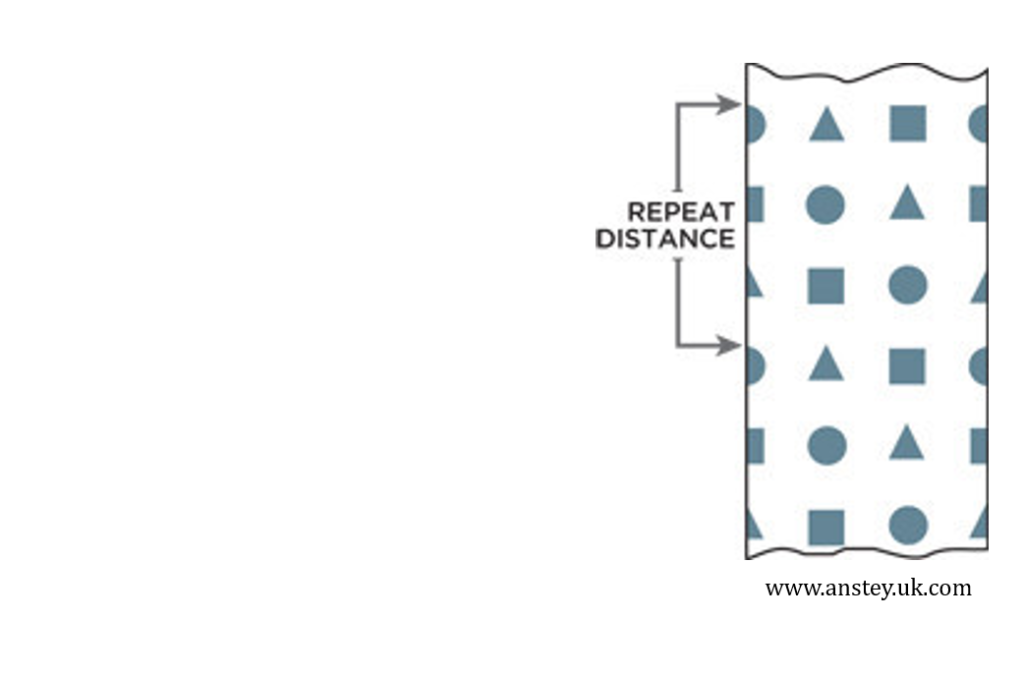
Repeats can be very small (less than an inch) to very large (over 20 inches).
You should care because with the pattern match (which I’ll discuss next), these two elements will affect the amount of wallpaper you will need to order and how difficult the installation will be.
What does pattern match mean? And what are the differences between straight, drop, and random pattern matches?
The pattern match refers to how you will be lining up the paper on the wall side by side so that there isn’t a break in the pattern.
A straight match (aka side-to-side match) means that all the strips/panels will line up the same at the ceiling, meaning you don’t have to match at the seams.
A drop match means that the panels/strips will be lined up diagonally, as the pattern has to be matched both vertically and horizontally. The most common type a “half drop match”, also called an “offset match”, means that the adjacent strip will be moved up or down so that the design is placed midway between the design of the previous strip. In a half drop match, it will take 3 strips/panels to complete the design (A “multiple drop match” means it will take 4 or more strips/panels to complete the design)
A random match means that you can line up the paper any way you wish! This is true for papers that are solid colored and simple texture (e.g., grasscloth) papers, but sometimes for nonrepetitive patterns as well.
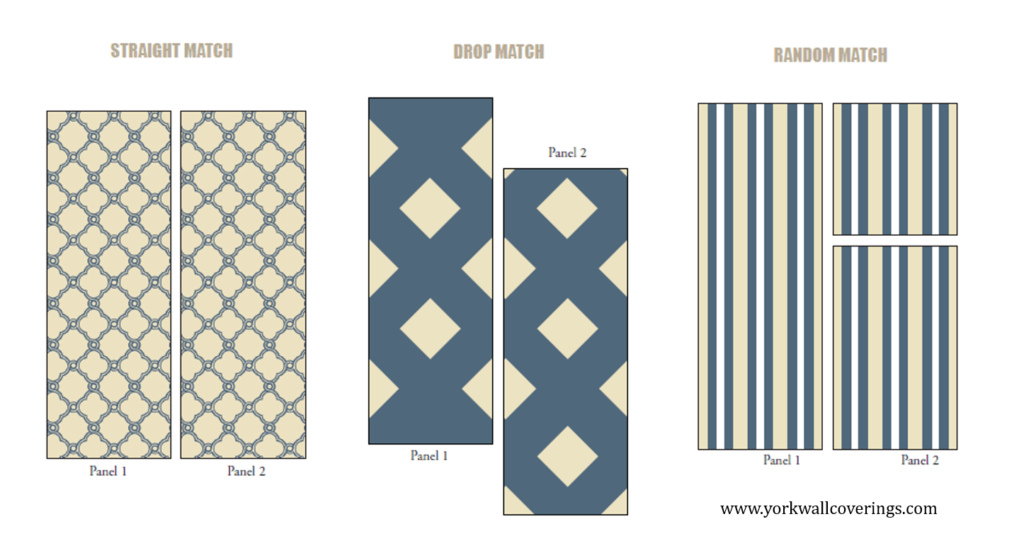
Interesting note: for solid colored and simple texture papers, you will often see professional hangers flipping every other strip to deal with any color variations.
As you might guess, a random match will generate the least material waste and a drop match will generate the most waste, while the straight match will generate some waste, but not a lot.
More waste = more wallpaper needed.
What is a batch number? Dye lot number? Run number?? Is this information important?
Thankfully, these three terms all mean the same thing, so they are used interchangeably. Dye lot number is the term I often hear wallpaper hangers use, and it just identifies which rolls were produced at the same time during manufacturing. And yes, this is very important because, unfortunately, when the same wallpaper is produced at different times, it’s going to be slightly different from the previous manufacturing runs, usually in terms of color. It may not be obvious at first, but if you were to hang wallpaper from two different dye lots side by side, you would most certainly notice that they don’t quite match.
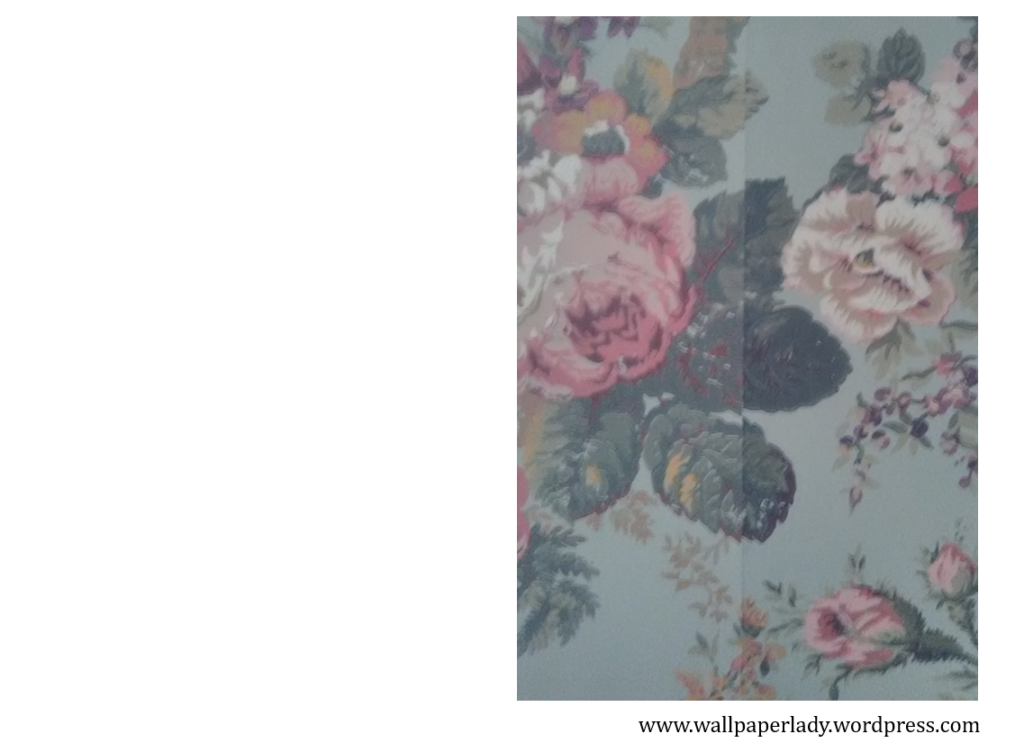
This is why you should always order more wallpaper than you need, so you don’t run into this problem, and keep your wallpaper label in case your paper arrives damaged and you need to order more. Finally, it’s always great to have a little extra paper around in case a panel on your wall ever needs to be replaced due to damage.
Should I order pre-pasted or unpasted? What is the difference between Paste-the-Wall wallpaper and Paste-the-Paper? Is one better than the others?
Pre-pasted paper has the paste already applied to the back of the paper and all you need to do is to wet it with water (by dipping the wallpaper into a tray of water). Once the paste is activated (becomes sticky) you can then hang your wallpaper. DIYers tend to prefer this type of paper.
Unpasted wallpaper means that you will need to apply the paste. This is what professionals like best. There are two types of unpasted paper – “paste the paper” or “paste the wall”.
With “paste the paper” you apply the paste to the back of the paper before you hang it. This approach requires soaking time to activate the paste before hanging the paper (more on this later).
With “paste the wall”, the paste is applied to the wall before you hang each strip. This type of wallpaper is made with a special non-woven backing that won’t expand when wet and does not require soaking time. “Paste the wall” paper is also easier to strip when you are ready for a change.
If you are after longevity, skip the pre-pasted paper as they are more likely to start peeling earlier then unpasted paper, so my vote is always for unpasted. As far as “paste the paper” or “paste the wall”, paste the wall is said to be the easier method.
What is booking?
Unless you’re hanging the wallpaper, you don’t need to know this, but still, good to know…
Booking is an important term when you are talking about “paste the paper” and prepasted papers. Booking is a process that activates the paste before hanging the strip. Specifically, booking means that you gently fold both ends of the paper towards each other, paste side in, without creasing the folds, and then loosely rolling it for several minutes before hanging it to allow the paper time to relax.

For unpasted paper, you would “book” the paper immediately after applying the paste. For pre-pasted paper, you would “book” the paper immediately after dipping it in water. This is an important process and in fact, improper booking will commonly lead to seam shrinkage and/or wallpaper bubbling, as wallpaper must have sufficient time to soak up the paste and expand.
Vinyl? Non-woven? Grasscloth? Fabric? How should I decide on material?
Like with most things in design, materials matter and the same is true for wallpaper. Let’s just focus on the most popular materials and what you’re mostly likely to see when shopping. I’ll briefly discuss the pros and cons, which should hopefully help you narrow down your choices.
First, we have vinyl.
Now you might be thinking that vinyl is just vinyl, but actually there are a few different type of vinyl-type wallpapers commonly available, all with similar advantages including being washable, scratch and fade resistant, and easily installed and removed. The main downside with vinyl is that it contains PVC, which can emit harmful VOCs during the production process and into your home. However, the production process of vinyl wallpaper has greatly improved and today you can find some vinyl papers with no or low VOCs.
That said, let’s start with our first vinyl product – solid vinyl – which is the most durable, and known for being washable, scrubbable, and long lasting. Vinyl works extremely well in high humidity areas like kitchen and baths.
Next we have vinyl coated paper. This product takes traditional wallpaper made from paper (which I’m sure you can guess is easily damaged, difficult to clean, and prone to fading), and is coated with an acrylic type vinyl or polyvinyl chloride (PVC) so that it can be easily cleaned, easily stripped, and generally able to be installed in kitchens and baths. These papers are often a good choice when looking for a detailed and patterned wallpaper.
Not to be confused with vinyl coated paper, there is also paper backed vinyl. In this product, paper is laminated to the back of solid vinyl decorative surface, which makes it thicker and grease/stain resistant. However, this paper is not a good choice for high humidity areas like your bathroom, as the moisture can cause the vinyl to separate from the paper over time.
We also have the popular fabric backed vinyl, which has either a woven or non-woven synthetic substrate that is laminated to a solid vinyl decorative surface. Because it’s very thick, it’s a great choice for walls with imperfections, it’s washable, and it’s easy to remove. This paper can be installed in kitchens and baths and is also popular in commercial settings.
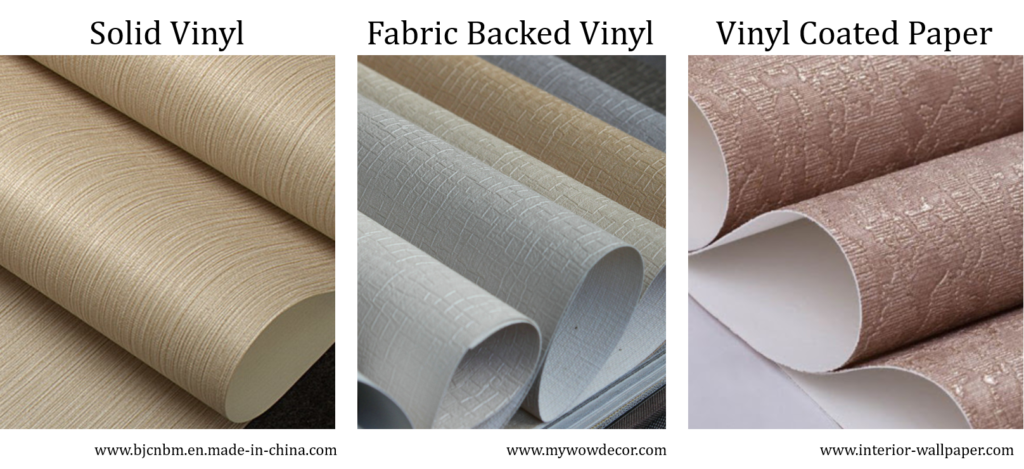
Moving on from vinyl we have non-woven wallpaper, which first came out in the mid-2000s and quickly took off in popularity. So why is that? Well first, let’s talk about what it is. Non-woven paper is a combination of natural and synthetic fibers (the same material we use for gauze pads, tea bags, and coffee filters).
Ahh, now that provides a clearer picture, yes?
Non-woven has become the preferred backing of many wallpapers – these non-woven backed papers are either coated with vinyl or paired with a textile or paper. So why is it so popular? Many non-woven papers are vinyl and PVC-free, so, much better for you and the environment. It is also washable, tear resistant (meaning you can easily remove it and reinstall it if necessary), it’s resistant to expanding and contracting, it doesn’t need to be booked before its hung, it will do a good job of hiding wall imperfections, and its breathable (no mold or mildew!) However, non-woven papers will absorb dust and they are a pricier product.

Grasscloth is another very popular choice in papers. It is a woven paper made from natural materials, such as bamboo, hemp, jute, and seagrass, and has a lot of great texture. However, stains can be difficult to remove and it should be cleaned regularly, possibly by a professional. Unfortunately, natural papers like grasscloth will absorb smell and it can also be damaged by moisture and hands, so I would only use this paper in low traffic, dry areas. Definitely not a kitchen or bathroom! If you love the look of grasscloth, but not the upkeep, there are some excellent faux grasscloth alternatives – I’m a big fan of Philip Jeffries faux grasscloth papers.
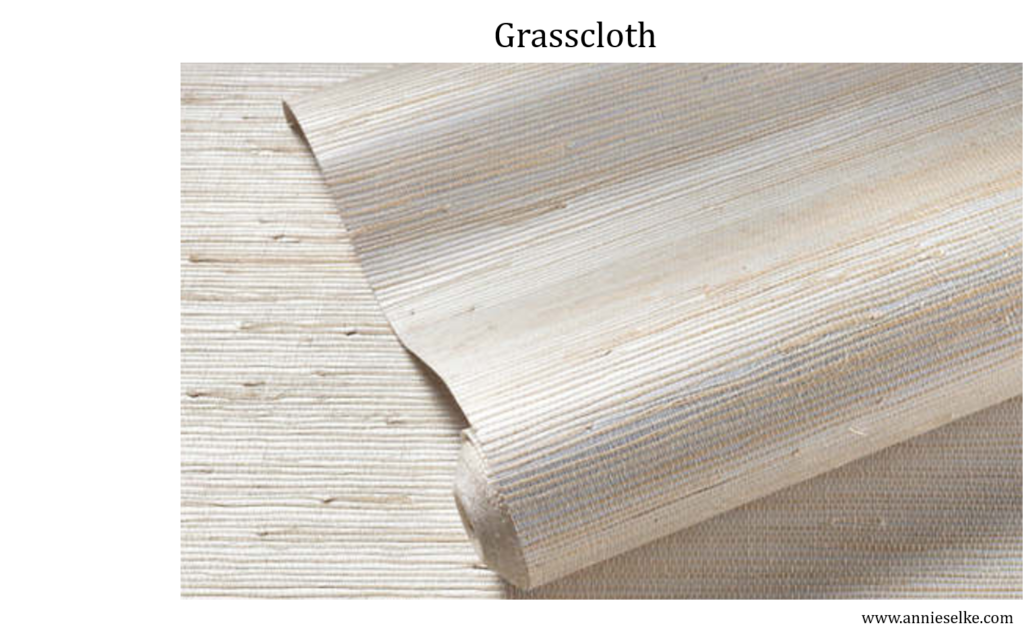
Last on my list to discuss is fabric wallpaper. It’s an excellent choice for renters or those who are afraid to commit to one paper for long. Instead of being applied with traditional adhesive, fabric paper is hung with liquid starch, which is a removable, lightweight adhesive. Because you can just remove the adhesive with water, fabric is your best choice if you are set on DIYing the installation. It’s also affordable and mold resistant since fabric is breathable. However, the baking soda in the adhesive can react to heat, and you may find that your wallpaper starts to discolor when exposed to too much heat. Finally, because it can removed with a damp sponge, this paper is vulnerable to moisture, so it’s not a good choice for kitchens or bathrooms.
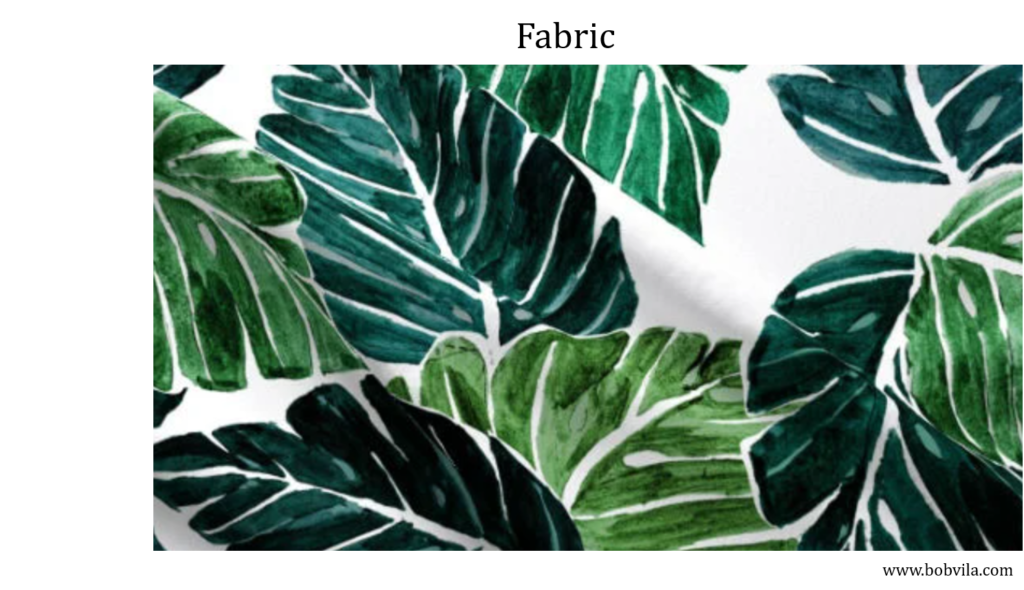
What’s the best way to calculate how much wallpaper I need?
You should first know that many online wallpaper calculators are often wrong. As you may remember from earlier in this article, many factors need to be taken into account (e.g., pattern match) when determining how much wallpaper you will need for a project.
For this reason, I always, always, always let the professional wallpaper hanger do the calculation for me. I don’t ever want to be in a situation that I don’t have enough paper for a job (even for my own home), knowing it may be difficult or impossible to obtain more paper from the same dye lot.
Is it difficult to find a great wallpaper hanger?
Sadly, yes, we definitely have a skilled paperhanger shortage, and this is consistent with my experience working on both U.S. coasts. All the hangers I’ve worked with share the same concern that designers do – what will the profession will look like several decades from now? That said, I’ve been fortunate in being able to find excellent wallpaper hangers wherever I’ve been working, so they are out there, and they are worth every penny! I encourage you to support our professional wallpaper hangers by using a professional for your next wallpaper installation.
Ok, so what is wall liner, and do I need it?
Wall liner is what I like to call “the best kept secret” in the world of wallpaper because most people I’ve talked to do not know that it exists, or if they’ve heard of it, they don’t realize everything what it’s capable of doing.
Let’s start with what it is.
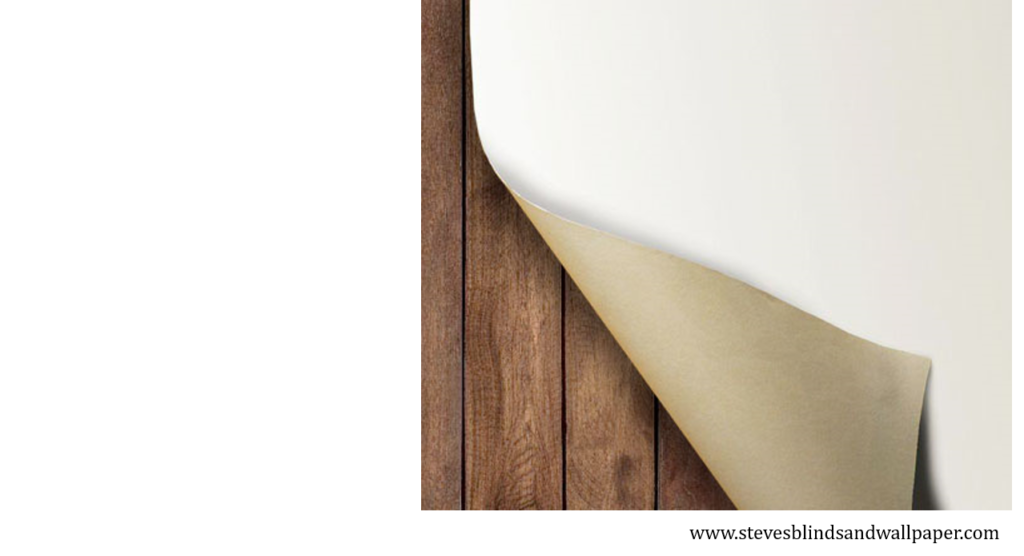
As you can see, it’s unprinted, thick white paper that can be purchased pre-pasted or unpasted, and it’s used for a multitude of reasons in both residential and commercial applications.
It can:
- Cover surface flaws in wall before installing wallpaper or painting, such as cracks or any textural irregularities
- Cover wood paneling, cinder block, brick, existing wallpaper, tile, stucco, and other rough surfaces
- Help stop wallpaper seams from spreading
- Provide a fantastic base for wallpaper to stick to ensure a superior finish
Like wallpaper it’s available in 20.5” or 27” width. Unlike wallpaper, wall liner gets installed horizontally (called “railroading”) so the liner’s seams aren’t in conflict with wallpaper seams which are vertical. The length of your panel should be the width of your wall.
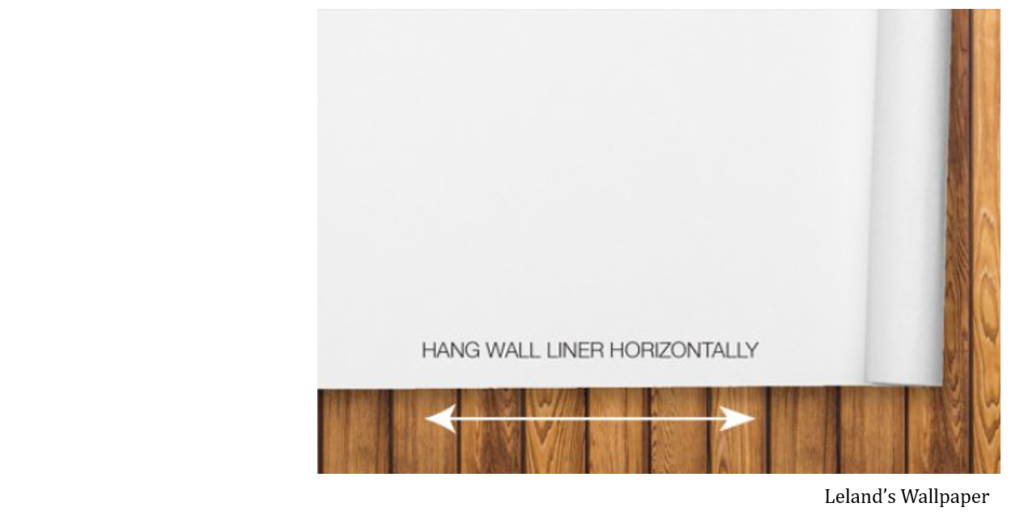
Wall liner comes in different “grades” from 800 (thinnest) to 2000 (thickest).To cover only hairline cracks in your walls, use a thinner liner. Thicker papers are better for walls that are in bad condition. If you’re not sure, experts say split the difference and go with roughly 1400.
Here are some additional helpful tips if you are the DIY type:
- Be sure the wall is clean and free of loose paint or debris
- Prime or seal walls first before applying liner (especially important when covering up high gloss paint)
- Let liner dry for at least 36 hours before painting or wallpapering over it
- If you are covering up old wallpaper, first ensure that the old wallpaper is applied securely. Also, old wallpaper may bubble up when you install liner so test a small section before applying all of it
- You must use the same adhesive for your lining paper as your top paper
- If you are using a paste the wallpaper, use a paste the wall lining paper
I hope you now see the tremendous value that wall liner can have on your wallpapering projects.
Happy Decorating!



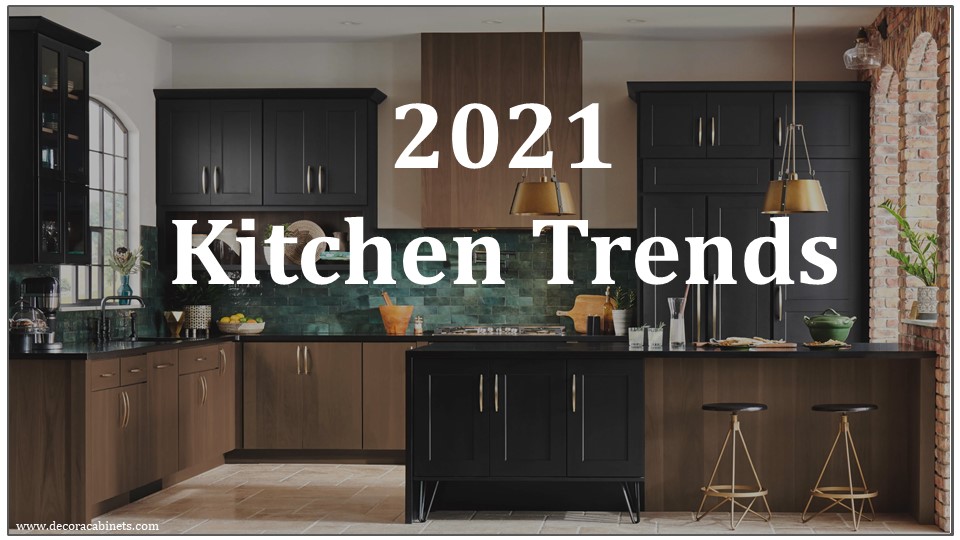

3 Responses
I was extremely pleased to discover this page. I want to to thank you for ones time due to this wonderful read!! I definitely appreciated every part of it and I have you bookmarked to look at new information on your web site.
Right here is the perfect web site for anyone who hopes to find out about this topic. You understand a whole lot its almost hard to argue with you (not that I actually would want toÖHaHa). You definitely put a new spin on a topic that has been discussed for decades. Excellent stuff, just great!
Nice post i like it 100 %. I learn something new and challenging on sites I stumbleupon on a daily basis. Its always helpful to read through articles from other writers and use something from their web sites.